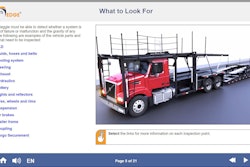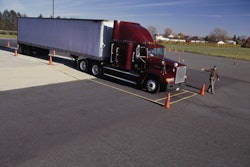You can’t talk about hiring and retention without mentioning the “Great Resignation.”
Last December alone, more than 4 million Americans quit their jobs. The greatest increase in resignations occurred among workers between ages 30 and 45. One of the industries hardest hit? Trucking.
Many truck drivers moved to other companies that were paying higher bonuses. The pandemic also stalled training and CDL testing, although by 2021, over 50,000 CDLs and learner’s permits were being issued monthly. FMCSA plans to launch a new three-year pilot program which will drop minimum required driver age for interstate CDLs from 21 to 18. Yet, finding and keeping drivers remains a top concern.
A majority of the truck driver population is growing older and nearing retirement age, but it’s difficult to attract new talent. Driving is physically and mentally demanding. Reported driver frustrations include difficult working conditions; demands making it difficult to maintain a healthy work-life balance; legacy software that’s cumbersome to use; wait times to drop off or pick up loads with delays of 2-and-a-half hours or longer; an inability to easily find appropriate and safe parking; and stagnant or lower wages.
While newer, innovative trucking and fleet management software can’t address all of these challenges, it can help alleviate some of the pain points. For example, a unified, cloud-based platform can offer solutions for mission-critical dispatch, workflow, routing, ELD, and fleet management business requirements to improve operational efficiency and make life easier for drivers.
Leveraging technology to improve the driver experience
New hires, whether fresh out of training or tenured veterans, expect to participate in some kind of onboarding process. Trucking software can improve the driver experience and offer virtual and hybrid training.
Equally important is its ability to offer more predictability so drivers can achieve a better work-life balance. Route optimization and freight planning software help with scheduling drivers and shipments and optimizing routes to give drivers opportunities to earn more and fit in more stops per day. Workflow mobile app software and other efficiency-boosting automation tools reduce rote tasks and human error.
Electronic logging devices keep drivers safe and compliant, while mobile workflow apps help drivers handle freight transactions efficiently. Real-time GPS tracking and in-app navigation and route optimization tools help drivers find appropriate parking or different routes around traffic jams.
These easy-to-use tools also take the guesswork out of compliance (HOS/ELD), document imaging captures for bills of lading (BOLs), support hands-free communication (messaging) with dispatchers and managers, and more.
Best practices for hiring (and keeping) drivers
Trucking companies should leverage a multi-pronged, lead-to-hire approach when sourcing new employees. In a competitive market, it pays to think a little differently. For example, HR departments and hiring managers can implement technology that optimizes most touchpoints.
Thinking outside the box — and challenging preconceived notions about driver recruiting — is important.
Innovative solutions come from asking the right questions: How can we improve driver experiences? How can technology alleviate hiring pain points for both potential drivers and the company? How can data drive continuous improvement within the hiring process? How (and when) should the human connection replace automation to reduce anxiety and improve driver hiring?
A wealth of technology exists to help with driver recruitment and hiring. HR and marketing departments can utilize advertising software to cater directly to mobile drivers, providing targeted ads delivered to drivers in real-time. Fleets can also use customizable, trackable landing pages for all ads and messages with a nearly instantaneous load time and geofencing technology to target students from specific driving schools.
Once you’ve made an offer and a candidate accepts, the process doesn’t stop. More employees are choosing to work for engaged and socially responsible organizations. Software advancements — cloud-based systems for dispatchers, planners and fleet managers, and mobile document imaging tools or electronic BOLs — have made it possible for many trucking companies to switch to more environmentally-sustainable paperless processes.
HR and executive teams should collaborate to define and establish their corporate brand and culture. Then, they must share their brand and values not only with current employees, but also (and equally importantly) with their external applicants.
The most critical ingredient necessary for building and retaining a strong, loyal workforce? Empathy. Ask drivers what they’re looking for. It’s important to see drivers not as cogs in a wheel but as valuable members of the company. Fleet managers and other trucking industry professionals, including software providers, must take time to get to know drivers, consider their needs and experiences, find their pain points and gain insight into their lives so that they can offer a better work experience and lifestyle.
Polling current drivers about these items provides a good litmus test for the trucking company to understand what current and potential employees want and expect from their employer. Use surveys and one-to-one conversations, for example, to inform HR’s approach to recruiting new drivers. Technology can help facilitate these processes with hands-free communication.
Finally, companies should also focus recruitment efforts on traditionally underrepresented groups. Trucking associations and publications are also hosting diversity and inclusion conversations within the industry.
Increasing diversity in the trucking industry
Consider recruiting from populations that have a small but growing presence in trucking, including Hispanic populations, people of color, immigrants and women. Designing recruiting and engagement strategies specific to these groups can deepen a trucking company’s candidate pool, help address the nation’s mounting driver shortage and increase career opportunities for historically underrepresented groups.
Companies might consider bilingual reporting. Some technology companies, including fleet management software providers, offer language translation options in their apps or training materials. Trucking companies with larger Hispanic workforces could use translations to provide materials in Spanish.
Use social media, online message boards and forums dedicated to specific groups like women in trucking, minority or former military groups. Consider using video as a recruiting or employee engagement and retention tool.
Keep drivers happy by meeting their expectations
Driver candidates are out there but trucking companies need to think creatively to attract, hire and retain them. Keeping drivers happy will require companies to address their expectations and the obstacles ahead.
Digital tools and solutions can support flexibility. It’s clear that technology — plus empathy, creative outreach and engagement tactics, diversity recruiting and communication — is critical for driver success. Trucking and technology companies should collaborate to create tailored digital experiences to engage drivers, increase productivity, improve job satisfaction, eliminate internal silos and foster connections with each other and the company.
Paige Creo is the director of marketing at Maven Machines, a premier telematics and fleet management software company. At Maven, she sets the brand direction, develops and leads marketing strategy, and oversees the marketing department. She also serves on the company’s leadership team, collaborating on strategic and organizational growth initiatives. Prior to joining Maven, Paige served as the VP of Strategy and Marketing for Bold Brain Ventures. She also ran her own marketing consultancy for seven years, worked as part of the brand management team at Rachel Ray Nutrish, and was the Marketing Manager at Musicmaker Ltd., in Dublin, Ireland, among other global work experiences. She holds an MBA from the University of Pittsburgh Katz Graduate School of Business and a BA from Washington University in St. Louis. In 2022, Paige was named to the national Women in Trucking Association’s “Top Women to Watch in Transportation.”














